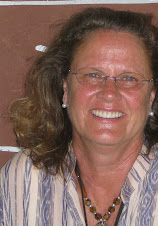Friday, the mercury touched 41.5 in Bhubaneswar (which is nearly 107 F) with high humidity. My kurta and pants were soaked to the knees by the time I walked the 5 minutes from the railway station to my hotel, and that was at 9 in the morning.
We started out the day at Nandankanan, the Bhubaneswar Zoo, which is famous for its white tigers. Usually big cats are sleeping in the middle of the day but several were up and pacing and we saw several of the rare mutations which this zoo has been successful in breeding. Maybe it was just too hot to sleep. I can relate!

In the evening, the children dressed in traditional garb, hand-woven Gadaba saris for the girls and dhotis for the boys and we attended the cultural program at the Tribal Arts and Artefacts Museum arranged for Governor Bhandare which was excellent. Plus, we got samosas! We were able to briefly catch the Governor on his way into t

he auditorium to hand-deliver the children's letter requesting education in their native tongue and he was most gracious in accepting it. Several beautifully costumed dance troupes performed and our kids seemed completely engaged watching. After the performance the Governor had photos taken with the dancers and I inveigled a photo with our kids as well. He was curious about where the children went to school and promised to visit Koraput. I

hope he does. Maybe their teachers will show up for school that day.
This morning d

awned cooler and we left for Konark early, first visiting the Sun Temple and then on to Radio Namaskar! Mr. Ansari was so gifted at interacting with the children and encouraging them to use the recording studio. I thought they would be nervous and maybe not want to sing or tell stories but after a few minutes of shyness they jumped at the opportunity, singing beautifully in a

mixture of Oriya and Desei, and telling some short tales. Another project coordinator has two girls who he says have beautiful voices and sing while they work in their village and I have offered to send them to Radio Namaskar! to be recorded as well if Ansari will have them.
To close the day, we stopped at the beach outside Konark for a dip into the Bay of Bengal. I was disappointed that the sea was so rough as it was really dangerous to wade. But the kids seemed to love the drama of the big waves and promptly em

ptied their bottles of drinking water and dashed as far as they dared into the turmoil to fill them up with the sea. What a great idea. I stood between the kids and the waves to ensure no one got washed away so naturally I got soaked every time the water caught me unaware, making the childen laugh hysterically.
We have not been able to get out into the villages to record tribal elders and I will be leaving India soon, but this is at least a start and I hope this project has paved the way to continued cultural preservation. Certainly, the children who were able to participate in this exposure trip got a great cultural experience and the message that people care about their traditions.
I found myself feeling quite emotional as I climbed out of the car. I will not likely see these children again and I would love to watch them grow up. Usually, there is the option to stay in touch through email, but without English, to say nothing of electricity in their villages, they won't have the opportunity. I love these kids and although I know they only slightly, I will miss them.






























